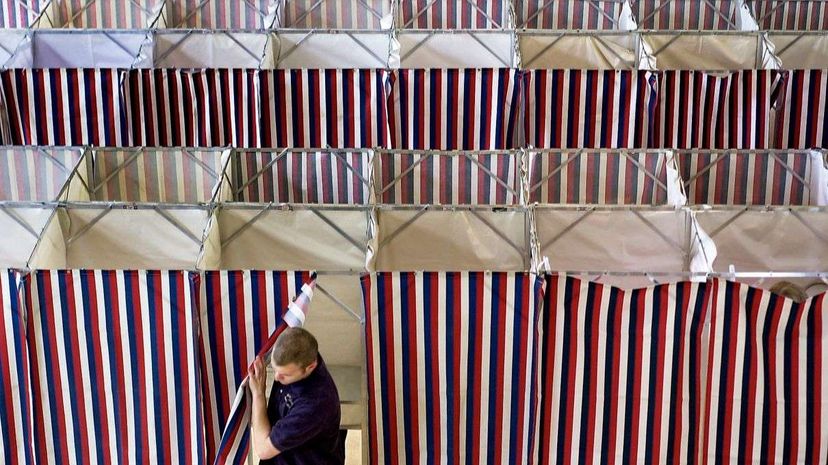
After every major election, Americans are beaten over the head with the bad news that voter turnout rates in the U.S. are some of the worst in the developed world. The facts are undisputed: Of the 34 industrialized nations with democratic elections, the U.S. ranks 31st in voter turnout, one spot behind Slovenia. Ouch.
But statistics can be misleading. True, in the 2012 general election, only 53.6 percent of the American “voting age population” — U.S. citizens 18 or older — cast a ballot for president. That's super low when compared to countries like Belgium and Turkey, where voter turnout was 89.37 percent and 86.64 percent respectively in their most recent general elections.
Advertisement
But comparing the U.S. to Belgium and Turkey is like comparing apples to french fries, or whatever they call them in Belgium. That's because voting is compulsory in Belgium, Turkey and 24 other nations worldwide. In Belgium, failure to vote is punishable by a stiff fine, and repeated nonvoters can be stripped of their right to vote and barred from government jobs.
In the U.S., voting is 100 percent voluntary, which helps explain why only 53.6 percent of folks do it. But that's not the only misleading statistic.
Maybe It's the Registration Process
The next issue is using the “voting age population” or VAP as the baseline figure for calculating voter turnout. In the 2008 general election, for example, more than 225 million Americans were eligible to vote. That's the VAP. Since only 131 million people voted, the voter turnout for 2008 was calculated as 64 percent — high for a U.S. election, but still low compared to other countries.
But we're missing an important detail here. Of those 225 million eligible voters, only 146 million were actually registered to vote (71 percent). When you divide the number of voters (131 million) by the number of registered voters (146 million), you get a U.S. voter turnout rate of 89.7 percent. Whoa.

Looking back at the voter turnout data of the 34 most-developed countries, the countries that rank closest to the U.S. in abysmal voter turnout — Canada, Slovenia, Japan and Chile — have nearly identical figures for both “percentage of voter age population” and “percentage of registered voters.” In America, however, there's a 36-point gap between the voter turnout numbers for percentage of VAP and percentage of registered voters.
Why the huge difference? It's simple: The U.S. makes people register to vote. Voter registration is automatic in countries like France (71.2 percent) and Sweden (82.6 percent), and some voting rights advocates argue that it should be automatic in the U.S., too. Data shows that when Americans are registered to vote, they vote! Under the current system, voter registration places one more barrier between U.S. voters and the ballot box.
Or Maybe, There Are Too Many Elections
But is the registration issue significant enough to explain why U.S. voters lag so far behind other industrialized nations? Not really, says Steven Taylor, chair of the Political Science Department at Troy University in Alabama. For Taylor, a bigger problem is “ballot fatigue.”
“In the U.S., we have lots of elections; arguably too many elections,” says Taylor. “If you look at a parliamentary system like France, they're not voting in local, state, county and city elections, and they're not getting a ballot that's two or three or 10 pages long.”
One could argue that more choices and more elections equals a more democratic system, says Taylor, but at some point voters get overwhelmed with the constant stream of TV ads and road signs and simply stop paying attention. Even experts aren't immune from information overload and decision fatigue.
“I have a Ph.D. in political science and I study elections,” laughs Taylor, “and I would be hard-pressed to tell you right now who I voted for in the last election and if I'm happy with what they're doing.”
Other excuses reasons why the U.S. voting rate is so low:
America holds elections on Tuesdays, a work day, while most other countries vote on Sunday
America disenfranchises felons for life — the only developed nation with such a punitive practice
Most U.S. elections aren't very competitive
America doesn't let teenagers vote — in Brazil and Austria, 16-year-olds can vote
Advertisement